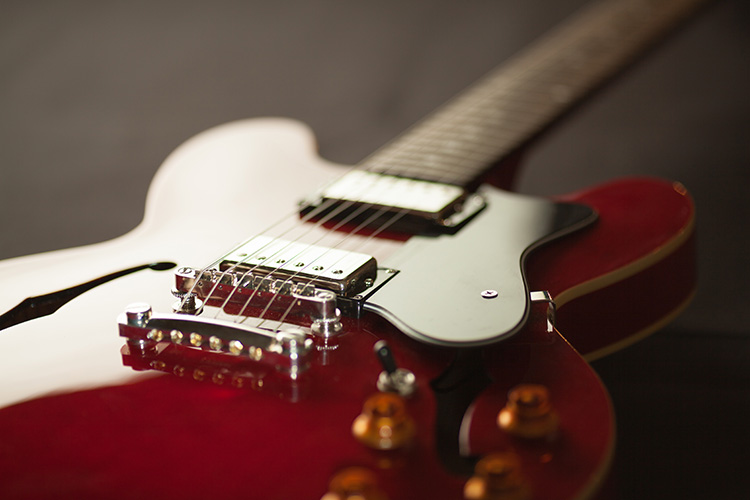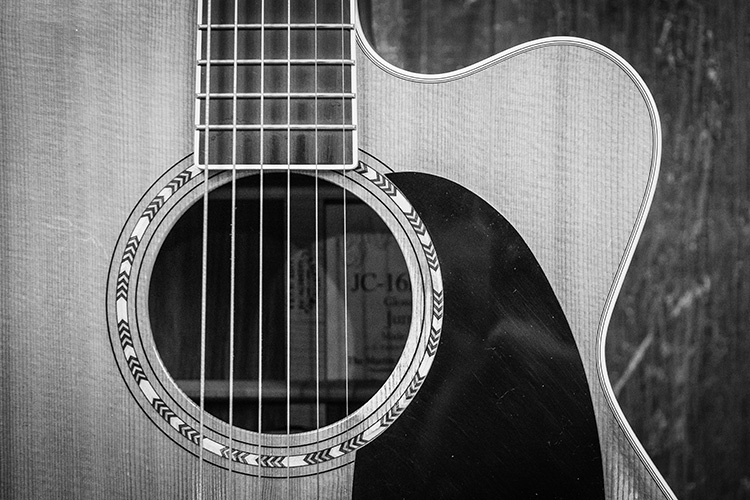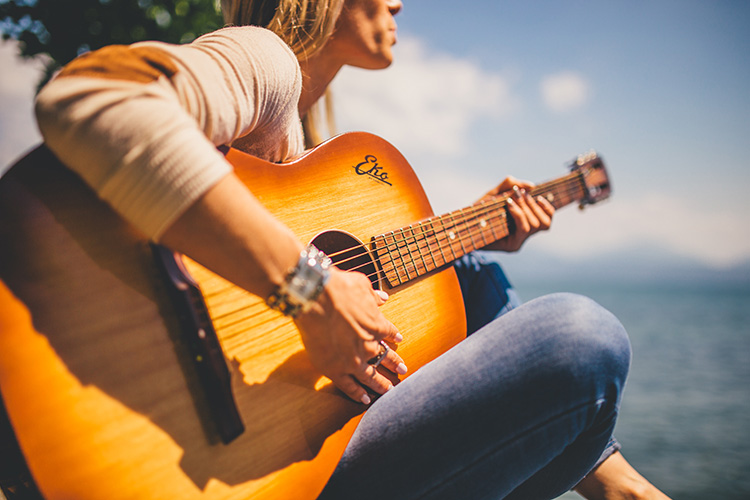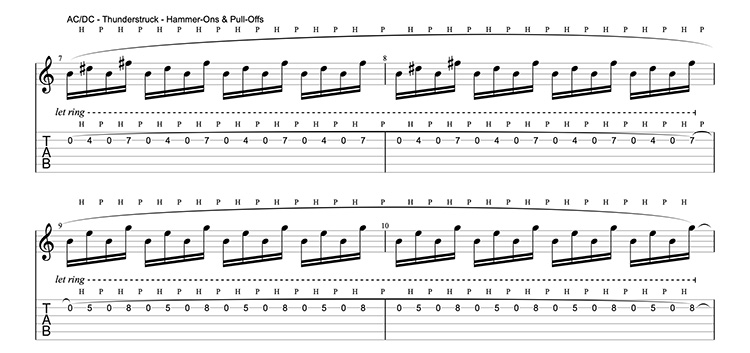Reading guitar tabs will change your life as a guitarist. In this lesson we’re going to show you everything you need to know about guitar tabs.
Over 100,000 guitar-learners get our world-class guitar tips & tutorials sent straight to their inbox: Click here to join them
In this free lesson you will learn:
- How to read guitar tabs in 5 easy steps.
- The no1 tab secret that will make turbo-charge your guitar progress.
- 3 epic tabs that will make you sound amazing.
Reading Guitar Tabs Can Be Difficult If We Don’t Know What We Are Looking At
Often dubbed the “guitarist’s sheet music,” tablature doesn’t look like a lot when we see it for the first time.
- Tablature, however, is riddled with information that will tell us most of what we need to know in order to play a song.
- This innovative method of reading music for stringed instruments without notation has been an asset to many guitarists over the years.
- With the aid of technology, we now have apps and software that can read tablature and audibly play it back for us as well.
In this guitar lesson, we’ll dive into the essential must-knows about reading guitar tabs to get you playing along to your favourite songs in no time!
What Are Guitar Tabs?
Guitar tabs (or tablature) is a method of reading ‘music’ without the use of traditional music notation.
- Although this method has served various other stringed instruments over the years in different forms, it is most commonly associated with the guitar.
- Tablature traditionally contains six lines, with each line representing one string of our guitar.
- Our strings our laid out with the thickest string (low E) on the bottom, and our thinnest string (high E) on the top.
This is what our standard tablature staff looks like without notes:
Our frets are represented by numbers on the staff. Each of these numbers represent not just the fret itself, but a note also.
The downside of tablature is that we can’t tell how long each note should last for.
When reading guitar tabs of our favourite songs, it’s important to listen to the song while we read to ensure we know the pace and tempo of the song.
Learning to read tabs in this way will help us learn quicker and more efficiently, so make sure you always keep a set of headphones at the ready.
Here’s what tablature looks like with frets:
Download our lead guitar cheat-sheet to make things easier
It's hard to understand which scales work with which keys.
So we created a cheat-sheet! A key and scale-finder that you can use again and again.

Get your personalised guitar-learning plan 🎸
Get a custom guitar-learning plan here: Click here for GuitarMetrics™
World-Class Guitar Courses 🌎
Learn from the world's best guitar educators: Click here for our guitar courses
Why Choose Guitar Tabs?
Reading guitar tabs takes much less time to pick up and learn than it does to efficiently read traditional sheet music.
As a result of this, learning to read sheet music can be off-putting for many guitarists, and thus they gravitate towards reading guitar tabs instead.
While guitar tablature is straightforward and shows us exactly what to play and where to play it, it also challenges us to use our ears and develop our hearing in a musical context.
Picking apart a song in order to learn it is not an easy task, but reading guitar tabs can help us make sense of complex sections that we cannot learn by ear.
The added bonus of reading guitar tabs is that with the help of technology, we have apps that can help us read tablature.
Programs like Guitar Pro by Arobas Music are able to play written tablature and slow down the speed in order to help us practice efficiently and understand more about what we are playing.
- As a bonus, Guitar Pro also transcribes our tablature into traditional music notation.
- This gives us the extra opportunity of learning how to read sheet music, which can benefit us as we progress on our journey.
Now, let’s break down some of the essentials for reading guitar tabs!
Reading Guitar Tabs – Breaking Down The Essentials
In order to read guitar tablature, we need to understand the mechanics of it first.
- Tablature is designed to read similar to sheet music, and we should treat it as such.
- One thing that tablature lacks is bar lines. This means that we cannot divide the music into pieces as easily as we can with traditional sheet music.
- The upside however, is that we have ears!
One of the easiest ways to learn a song through reading guitar tabs is with the song on hand.
Play back small sections of the song at a time and focus on each part as you learn the song.
- Never forget that listening will always teach you exactly what you need to play, regardless of your skill level.
- Take the time to listen closely to what your favourite artist is playing, and how they are playing it.
- Once you’ve mastered one section, move on to the next and work on connecting them together.
Learning music in this way will help us maintain a consistent workflow from the beginning of the song to the end.
This principle can apply to learning music at any level of skill.
Much like traditional sheet music, tablature uses a variety of different symbols to convey different techniques that should be used throughout a piece of music.
Reading guitar tabs with attention to these details will help us learn to play songs as close to the recording as possible.
Many tabs that we find online can be written with the bare minimum amount of information.
Some that are made on public forums like Ultimate Guitar can have some minor (or major) mistakes as well, so make sure to always rely on your ears.
If it sounds wrong, it may very well be.
Remember, details matter in music. Listen for them, and always try to replicate what you hear when learning.
Reading Guitar Tabs – Horizontal and Vertical Fret Numbers
Our fret numbers are displayed both horizontally and vertically when reading guitar tabs.
- When we read our frets horizontally, that indicates that those notes should be played one after the other.
- When we see fret numbers displayed vertically, this indicates that a chord should be played.
Bear in mind that not every chord is six strings in length. Quite often we will see chords that use only three or four strings.
In these cases, it’s important to watch out for the strings we shouldn’t play.
The strings that we should not play in a chord are often marked with an X on their respective string line.
It’s important that we adjust our hand and pick to accommodate the amount of strings needed for a chord.
Strumming strings and notes that aren’t in a chord can often result in an unpleasant clash of notes.
Top Tab Tip!
When reading guitar tabs to learn a piece of music, break up the sections so that you can focus on smaller pieces of the song at a time. When we first start out learning to play guitar, reading large passages of music can seem like a heavy task.
This is why it’s important to learn in small sections. Give your brain and hands a chance to get on the same page and you’ll find yourself learning to play guitar more effectively.
Try this exercise below, and play as you read:
Learning To Read From Line To Line
Guitar tablature does a great job of teaching us where to play, but one of the more difficult aspects is learning to play from one string to the next.
- Developing our hand-eye coordination to practice reading guitar tabs while we play is a skill that takes time to craft.
- We should dedicate a good amount of time to honing our skill of reading guitar tabs while playing.
- Read slowly, practice effectively and you will find that you’ll start reading guitar tabs more fluidly.
Let’s look at an example that requires us to switch strings every other note:
In this exercise, we only play two notes per string on the second and third frets.
Use your index or middle finger to play this exercise, as well as the open strings.
Pro Tip: Using alternate picking in this example will help you to develop a more fluid playing style. Alternate picking helps us smooth out our guitar playing, and develop our speed at a faster and more efficient pace.
Intermediate Skills
uitar tablature has its own set of commonly used symbols that are meant to convey different techniques.
It’s important that we become familiar with these symbols, as they will help us to develop our technique in a musical context.
Some of the most common techniques that we will see while reading guitar tabs are:
- Hammer Ons & Pull Offs
- Slides
- Alternate Picking
- Tapping
- Vibrato
We can see these examples all throughout classic guitar songs like the ones in the tabs below.
Reading Guitar Tabs – Hammer Ons & Pull Offs
‘Thunderstruck’ by AC/DC is a classic rock song which frequently uses hammer ons and pull offs.
- For ‘Thunderstruck,’ we want to aim to alternate fingers between the index and ring as we hammer-on and pull-off on the high E string.
- Like the name implies, we want to hit our string with some force behind our fingers so that the notes will sound out properly.
- Aim to hit the center of the fret for the hammer-on; then pull off in a quick downward motion off the edge of the fretboard.
In this example, the ‘H’ stands for hammer on and the ‘P’ stands for pull off.
Reading Guitar Tabs – Slides, Bends and Vibrato
In the example for ‘Purple Haze’ by Jimi Hendrix, we want to slide into the first main note of the riff. This slide gives us momentum, and powers the rest of the riff.
In the tab, ‘sl’ tells you that you need to slide into the note.
- We should aim to play this riff in a smooth fashion, with clear and easy transitions from one note to the next.
- On the notes that are held longer, we can add some vibrato by moving our finger back and forth on the string. This is indicated by the squiggly lines on top of the staff.
- Vibrato is a great way to add life and character to our playing – Give it a shot!
As well as this, whenever we see an arrow that points up, this is telling us to bend the note. Often you’ll see these numbers and notes by the bend:
- ¼
- ½.
- Full.
- 1 ½.
This tells us how far we need to bend the note. Here’s what each number and notes mean:
- 1/4 – bend this note slightly.
- ½ – bend this note a semitone.
- Full – bend this note up a tone.
- 1 ½ – bend this note up three semitones.
Reading Guitar Tabs – Finger Tapping
In the third example, we see the basic layout for what finger tapping looks like when reading guitar tabs.
In this example the:
- ‘T’ refers to the note that you tap.
- ‘H’ refers to the note that you hammer.
- ‘P’ refers to the note that you pull off.
Remember to use two hands when playing this tapping lick.
Use one finger in your picking hand and one in your fret hand to conquer this lick. In our fret hand, we should use our index finger to tap the 3rd fret.
- Our index or middle finger is the best one to use when learning how to use two-handed tapping with our pick hand.
- We can pull-off to the open position from the tenth fret with our picking hand, and hammer-on to the third with our fret hand.
It’s the fine details such as technique that bring these guitar riffs to life, so don’t hesitate to spare some extra time practicing them!
Where Can I Find Guitar Tabs Online?
The easiest and most accessible place to find tabs online is Ultimate Guitar.
This website features user-submitted tablature for many of your favourite songs, as well as new music to discover.
- One thing to keep in mind when searching for tablature is the star-rating system that Ultimate Guitar uses.
- Users are able to rate tabs on the website based on how well-written they are.
- When reading guitar tabs that were not written by a professional transcriber, there can be some mistakes.
This is why it’s so important that we use our ears when learning music.
When selecting a tab for a song you’re looking for, try to find one with a five-star rating.
This means that the tab is well-written. and likely contains a lot more detail than some of the user-submitted content you will come across.
Another thing to be mindful of is that some guitar tabs are not available for free online.
- Many tablature transcription companies such as Sheet Happens Publishing pride themselves on helping musicians transcribe their music for tablature and notation.
- Bands will then sell these transcriptions as tab books that you can purchase online or at concerts.
- Even though they aren’t free, purchasing a tab book from your favourite band or artist helps support them and their livelihood.
It’s also a huge compliment to any musician to have someone learn their music!
Where Do I Go From Here?
Want to keep learning more about reading guitar tabs? Fantastic! We recommend:
- Search for guitar tabs of your favorite songs and learn them.
- Pick up some Artist-approved tab books over at Sheet Happens Publishing.
- Try Guitar Pro to be able to hear your tabs and play along to them.
- Try writing out tablature by hand – You can buy blank tab sheets at your local music shop.
- Check out our lessons on reading guitar tabs and more here.
Recommended Resources
Looking for more information on reading guitar tabs? Check out some of our other free lessons below:
- Guitar Tabs For Beginners: 20 Easy Songs That Sound Great
- Acoustic Guitar Tabs – 19 Easy Songs That Sound Amazing
- Guitar Scales Tabs: The Ultimate Guide
- 30 Guitar Riffs That Are Fun To Play And Sound Amazing
- How To Play Guitar Power Chords
What Type of Guitarist Are You?
Take our 60-second quiz & get your results: Take The Quiz
Join the world's best online guitar school 🌎
- Get your own personalised guitar learning plan (customised just for YOU).
- World-class online guitar courses. Learn at your own pace.
- Community Campus & Learning Forum - A friendly community! Connect with our team & students. 😊
- Beginner Song library with chordsheets, tabs and tips. (Songs suitable for all levels!)
- Regular live streams, seminars and Q&A sessions - Learn from world-class guitar educators. Get all your questions answered!
Click here to learn more about National Guitar Academy membership 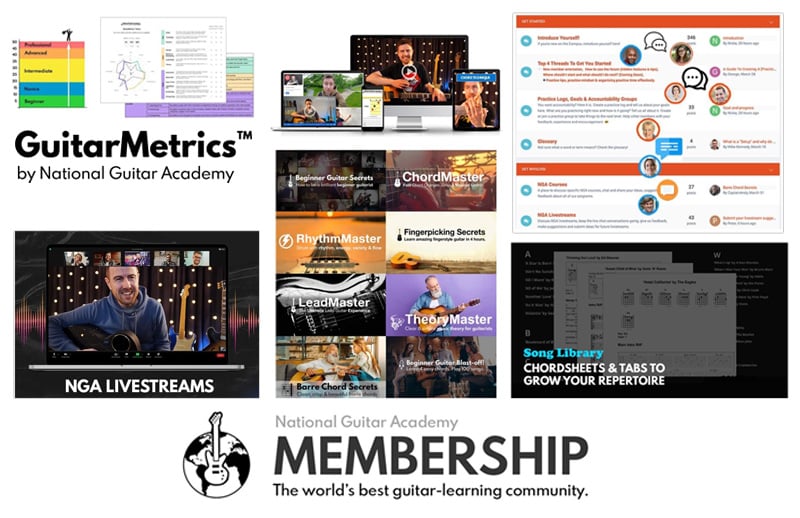
Cool Guitar T-shirts 😎
Look cooler! Check out our merch: Click here to see our merch store
Want free guitar tips and video lessons delivered to your inbox?
Join over 100,000 guitar-learners and subscribe to our guitar-tips-by-email service. (It's free.)
We'll send you a series of lessons that will move you to the next level of your guitar journey.
Learn how everything fits together quickly, easily and effectively. We share ninja tips (for instant fun!) but also timeless fundamentals that will deepen your understanding.

Popular Lessons
How To Learn Guitar: An 11-Step Programme For Beginners
How To Choose The Perfect Beginner Guitar
More Cool Guitar Stuff
Learn about National Guitar Academy: About Us
Join us on Facebook for daily guitar tips.
Listen to our Learn Guitar Podcast for rapid guitar progress.
Check out our free chord lessons.
Get our best guitar tips & videos
Where should we send it?
Get our best guitar tips & videos




